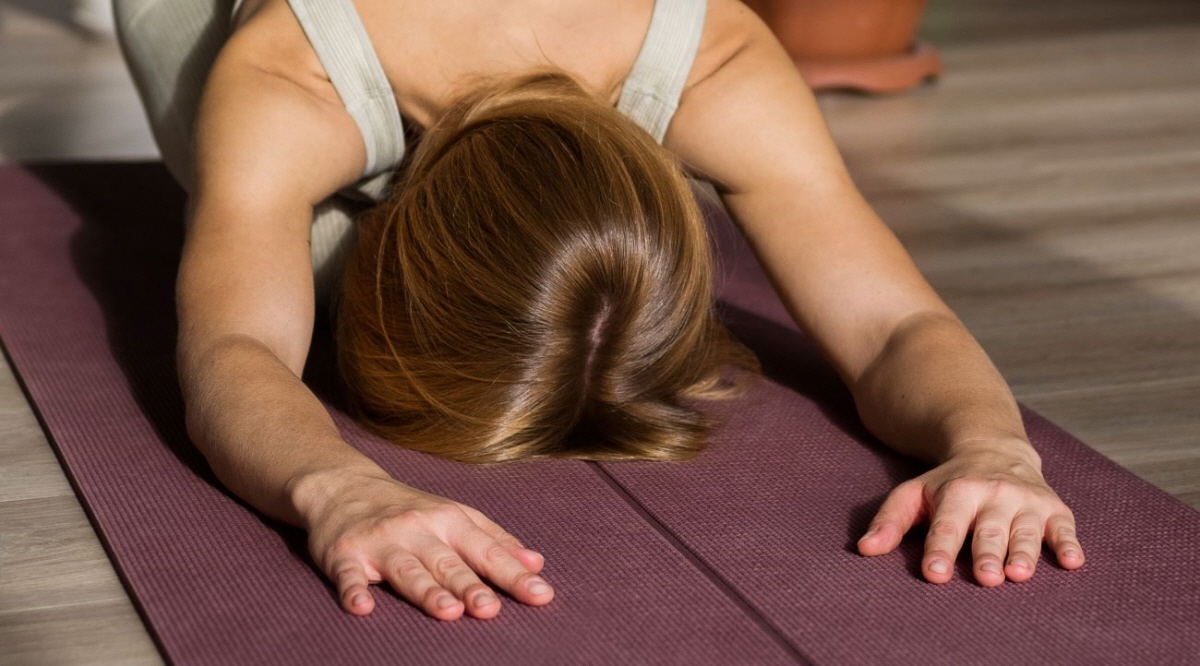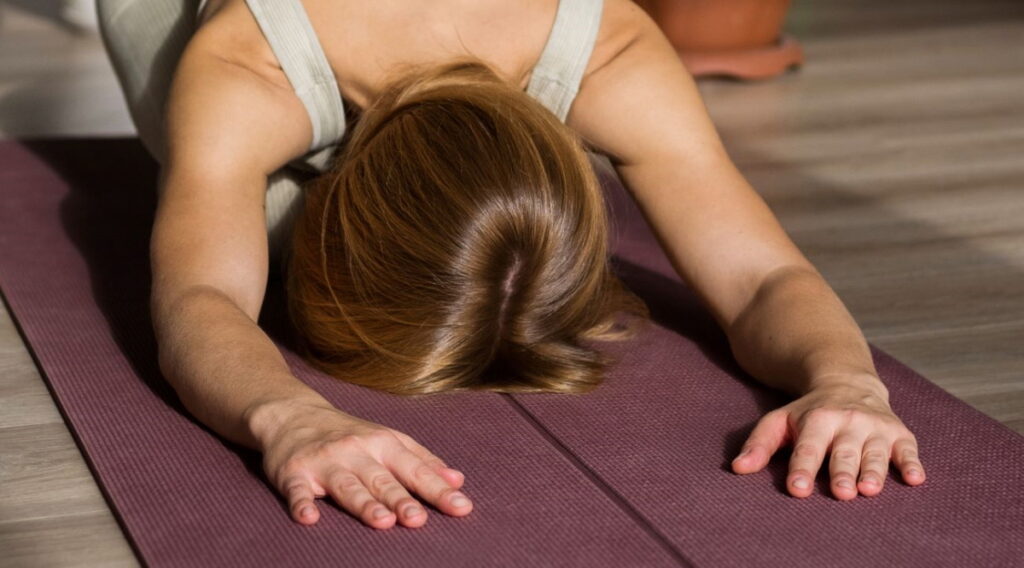
There are many important factors to consider when building your home gym. What type of equipment will you need? What will the layout look like? Do you have enough space for everything you want in your gym? With all this in mind, one major element that is often overlooked is flooring! Selecting the right flooring for your home gym is crucial because you want to ensure that you invest in a durable material that will not get damaged by your daily workout routine. You will want to ponder several features before choosing the right flooring for your home gym, including shock absorption, soundproofing, and waterproof slip resistance. We will discuss each of these components of gym flooring, along with the various types of flooring and thicknesses to best fit your workout routine.
Benefits of Choosing the Correct Home Gym Flooring Thickness
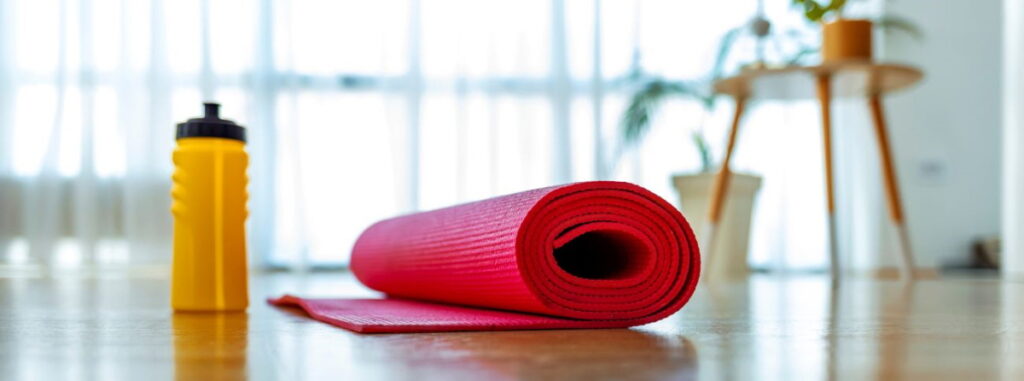
Shock Absorption
The flooring of your home gym is especially important when doing high-impact workouts or weight training. Certain types of flooring can help absorb the shocks that impact the body, which helps prevent joint and ligament damage. Repetitive strain injuries can also be reduced when the proper flooring is installed. Shock absorption is also imperative to help protect the floors of your home from damage from weight training or dropping heavy objects.
Soundproofing
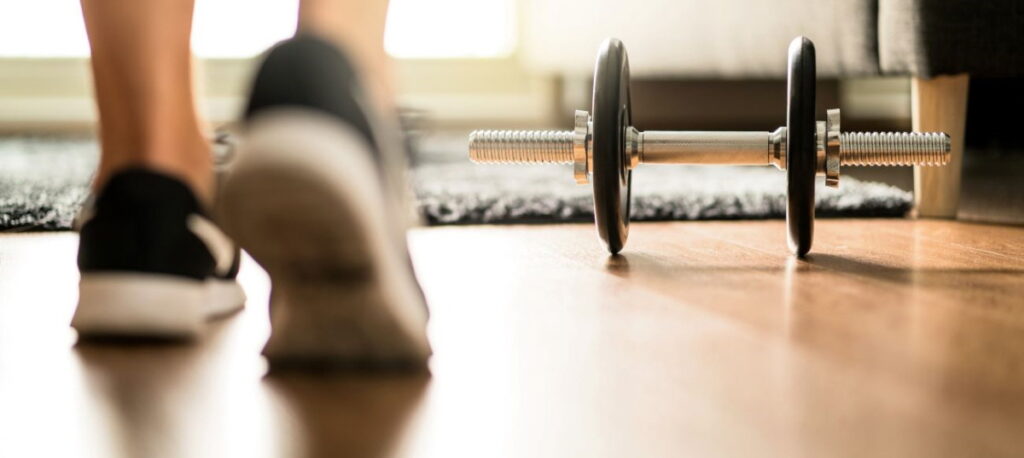
Waterproof Slip Resistance
One of the central qualities of proper gym flooring is that it can prevent slips and falls in your home gym that can lead to serious injuries. Vinyl and rubber flooring each provide a waterproof surface that allows your shoes to gain the necessary traction required when working out. This same waterproof quality makes your home gym easy to keep clean as vinyl and rubber reduce odors and prevent the floor from absorbing sweat and the bacteria it carries.
What is the right thickness for each type of home gym flooring?
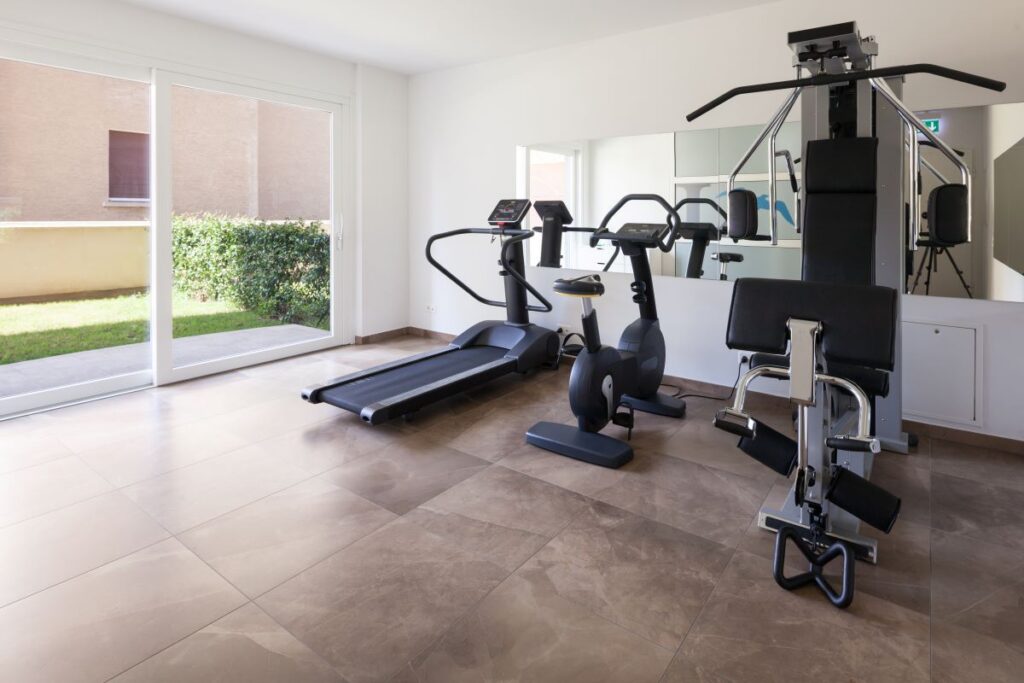
In this section, we will discuss the different types of flooring for your home gym, along with the thicknesses you should consider based on the exercises you will be doing.
Interlocking Rubber or Vinyl Tiles
Interlocking rubber or vinyl tiles are many homeowners’ first choice when it comes to flooring for their home gym because they are an easy DIY install that doesn’t cost a lot of money. However, many people need a larger space for their home gym, and these tiles are ideal for smaller spaces. The most important thing to remember when picking out your tiles is to ensure that you select the appropriate thickness for your gym. Many people often pick out the cheapest material for their gym floor to offset the cost of expensive gym equipment; however, this may result in ruined floors and possible injury.
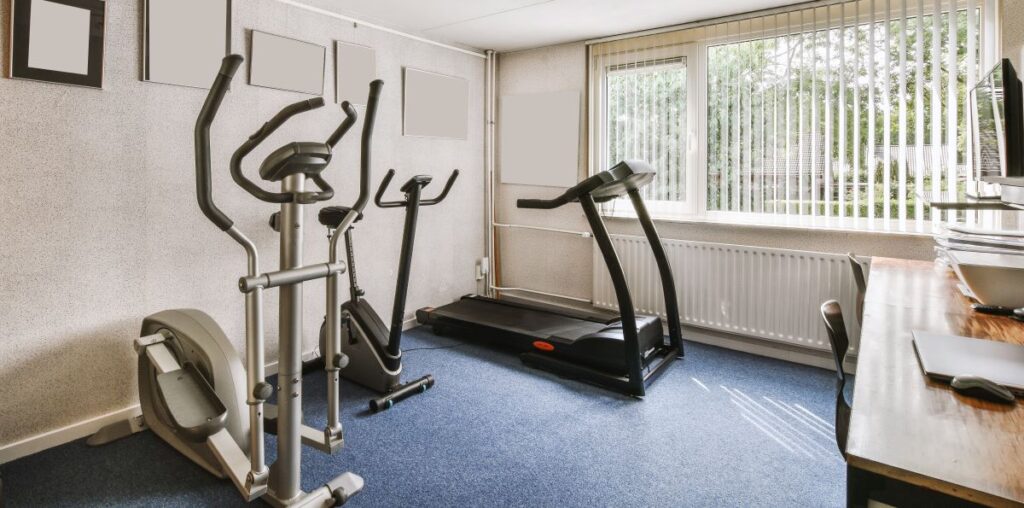
8mm Gym Flooring
8mm is typically considered the “standard” thickness for any home gym flooring, but your ultimate selection depends entirely on your workout routine. 8mm is the ideal thickness for home gyms where you lift between 50-75 pounds, do yoga or practice cheerleading or dancing. This is also the flooring thickness of choice for home gyms where you will be doing martial arts, except when groundwork is involved. For that, you will want a thicker mat.
Rubber Mats or Vinyl Flooring Rolls
You will want to choose rubber mats or vinyl flooring rolls if you have a larger home gym and more space to cover. These types of flooring offer versatility, as they can be quickly rolled out to cover large spaces and cut to size to fit the space. If you have an outdoor home gym, this is the flooring for you.
¼ inch or 6mm Mat Gym Flooring Thickness
¼ inch thick flooring is only recommended for gyms where low-impact exercises will be done, and there isn’t any concern about dropped weights. This thickness could be used for selectorized strength machines and under utility benches that will only use light weights, but it shouldn’t be relied on to protect the floor under the mats.
3/8 inch or 10mm Mat Gym Flooring Thickness
3/8 inch flooring used to be considered the “standard” thickness for any home gym, but its weight makes it more costly to purchase and ship than the 8mm thickness, while the additional protection it provides is negligible. The additional weight also makes this flooring type more cumbersome to manipulate during installation. This thickness is ideal for cardio and strength equipment, especially when using lighter kettlebells, barbells, weights, and dumbbells.
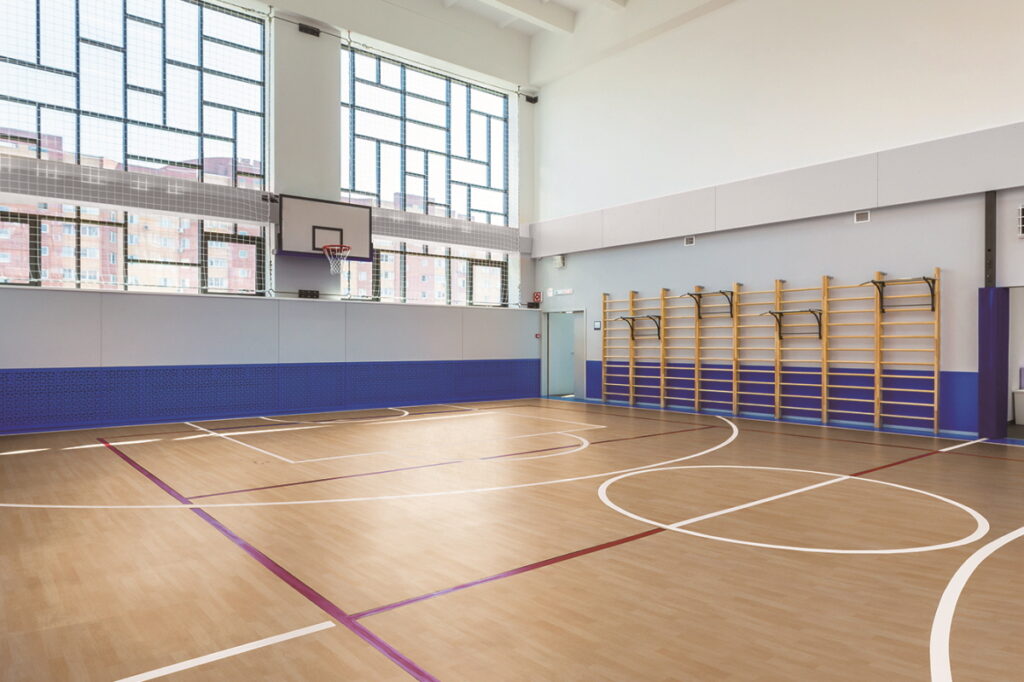
½ inch or 13mm Mat Gym Flooring Thickness
½ inch-thick flooring provides adequate safety when lifting heavy barbells, dumbbells, and kettlebells. This flooring type is also ideal for use beneath weightlifting equipment, such as squat racks, bench presses, utility benches, and power cages.
¾ inch or 25mm Mat Gym Flooring Thickness
When doing Olympic barbell lifts or deadlifts, you will want a ¾ inch-thick flooring to protect your floors (and yourself) from the weights’ impact. This is also the thickness to go with if you will be doing CrossFit training in your home gym.
Contact Us
If you want to convert a room in your home to a gym, let’s talk about your flooring options. To make your gym safe and functional while maintaining the aesthetics and value of your home, we offer several vinyl flooring options under our HFLOR brand. If you’re a commercial designer or looking to build a public gym space, check out commercial Sports flooring options. If you need assistance or have any questions, our team is glad to help. Please fill out our contact form, and someone will respond quickly.

